Early Career: Shunrō’s Illustrations for Popular Kibyōshi Novels, 1780–93
Most designers in the ukiyo-e tradition of Japanese woodblock prints also illustrated books. In fact, many started their careers as illustrators of books, primarily novels, and Katsushika Hokusai (1760–1849) was no exception. While many artists abandoned this practice once they gained a reputation in prints, Hokusai always continued to explore its possibilities. Indeed, there is probably no other artist who so deserves a separate discussion of his contributions in the book format, particularly since the Edo tradition was very different from that of the Kyoto/Osaka region. During the period Hokusai was active, kyoka collections in Osaka and Kyoto mostly featured line illustrations; in Edo, however, similar publications were often printed in color. Many examples of Hokusai’s illustrated books can be found within the Pulverer collection.
Like most of his contemporaries who were trying to make a name in the world of ukiyo-e in the 1770s and 1780s—such as Kitagawa Utamaro (active 1777–1806) and Utagawa Toyokuni I (active 1786–1825)—Hokusai made his debut with designs for various kinds of popular novels. These included kibyōshi, satirical novels about contemporary life; sharebon, a genre usually set in the licensed quarters; and hanashibon, books of humorous short stories. Hokusai illustrated four kibyōshi in 1780; another kibyōshi, one sharebon, and hanashibon the following year; and two more kibyōshi and one hanashibon in 1782, continuing at that level of productivity for the next few years. By 1793, the year he left the Katsukawa atelier, where he received his first training, he had illustrated thirty kibyōshi, three sharebon, and three hanashibon working under the name of Katsukawa Shunrō. He then decided to establish himself as an independent artist and began using the name Hokusai Sōri in 1795.
Hokusai Sōri: The World of Kyōka Collections, 1795–circa 1807
As Hokusai Sōri, independent from any established tradition, he sought acceptance in the world of kyōka poets, designing numerous kyōka surimono prints. His real success, however, is reflected in his illustrations for kyōkabon, collections of poetry issued by the various kyōka clubs. By 1796 he had achieved sufficient fame to be included in the small circle of designers around the poet Asakusaan Ichindo (1755–1821), contributing plates to the lavishly printed harmonica albums (orihon) Yanagi no ito (The Threads of the Willow, 1797) and Otokodōka (The Stamping Song of Men, 1798). Both albums were edited by Ichindo and published by Tsutaya Jūsaburō, and each one features six color plates by various artists, such as Suzuki Rinshō (active 1758–97), Kitao Shigemasa (active 1764–circa 1810), Utamaro, Hosoda Eishi (active 1786–circa 1810), Tsutsumi Tōrin (active 1792–98), and Hakuhō Ekigi (active 1797–1800). During the Kansei period (1789–1801), in addition to this most prestigious series of kyōkabon, Hokusai Sōri was also involved in several, only slightly less prestigious albums, quite an accomplishment for someone who had begun to work independently, starting from zero in effect, only a few years earlier.
Another success he could boast of was his series of kyōkabon on Edo topography: five publications in the large ōbon format, all illustrated exclusively by Hokusai. In this respect, it should be remembered that Utamaro had been the last to do something similar, in two series of extremely luxurious kyōkabon published by Tsutaya Jūsaburō in 1788 and 1789, respectively. Hokusai’s series focused on famous places in the capital city of Edo and is comprised of:
Azuma asobi (Amusements in the Eastern Capital, 1799), edited by Asakusaan Ichindo and reissued without the poetry but with added color blocks as Ehon Azumi asobi (Picture Book of Amusements in the Eastern Capital, 2 vols., 1802) Fig. 1
Tōto meisho ichiran (Famous Places in the Eastern Capital in One View, 2 vols., 1800), also edited by Asakusaan Ichindo, and reissued and reprinted several times as Tōto shōkei ichiran (Beautiful Views in the Eastern Capital in One View, 2 vols., 1800, 1815, and 1842) Fig. 2
Miyakodori (Birds of the Capital, circa 1802)
(Ehon Sumidagawa) Ryōgan ichiran (Picture Book of the Sumida River—Both Banks in One View, 3 vols., circa 1803) Fig. 3
(Ehon kyōka) Yama mata yama (Picture Book of Kyōka Poems—Mountain Upon Mountain, 3 vols., 1804) Fig. 4
Azuma asobi—the only one with line illustrations—featured quite traditional views of the generally accepted famous places of Edo. Tōto meisho ichiran, Miyakodori, and Yama mata yama, however, featured a combination of both the well-known and the more uncommon places in the city, such as the Kameido and Yushima shrines, Zōshigaya temple, Atagoyama, the horse racing ground at Takada, and Kudanzaka slope. Ehon Sumidagawa presented a continuous panoramic view of both banks of the Sumida River, then a new concept that was later copied for the Yodo River in Osaka (1824 and 1861). Hokusai’s series did fit within a certain tradition of kyōkabon on Edo’s famous places, which began in the 1780s with such publications as:
Ehon Edo suzume by Utamaro (3 vols., 24 views, 1786)
Ehon kotoba no hana, also by Utamaro (2 vols., 15 views, 1787)
Ehon Azuma karage by Kitao Shigemasa (3 vols., 26 views, 1787), which served as a source for many plates in both Utamaro’s Ehon Azuma asobi (3 vols., 24 views, 1790) and his Ehon Surugamai (3 vols., 25 views, 1790)
Ehon Azuma kagami by Shigemasa (3 vols., 1787)
Kyoka saitan—Edo murasaki by various illustrators (1 vol., 1795)
Unlike Hokusai’s works, however, these books all had line illustrations. They also show how much kyōkabon in Edo differed from that in the Kansai region, mainly Osaka, where it featured mostly small illustrations on various themes, but rarely on one specific topic. (The true “artist’s album,” gafu, was developed in Kansai beginning in the late eighteenth century by artists primarily known for their paintings.) The larger tradition of depicting Edo’s famous places was characterized by one vogue for perspective views, ukie, from the late 1760s to the late 1780s, and another exemplified by Utagawa Hiroshige’s (1797–1858) countless Edo meisho and Tōto meisho series from the 1830s to the late 1850s. With the exception of the final group, One Hundred Views of Famous Places in Edo (1856–58), Hiroshige’s series are comprised primarily of stereotypical pictures, catering, we can assume, to the numerous visitors arriving in the capital. Both artists focused on the city’s famous buildings. Hokusai, however, depicted those notable places as settings for scenes of daily life, perhaps a precursor to the essential role that ordinary people would play in his later series of great landscape prints.
Although he would contribute to quite a few kyōkabon later in his career, these were mostly restricted to one or two plates. Hokusai’s intensive involvement in these private publications probably came to an end around 1806/1807. At that point, he could confidently leave this field to a number of talented pupils, particularly Teisai Hokuba (active 1802–30s?).
Hokusai Taito: Drawing Manuals, 1810–24
Hokusai’s gradual retirement from the world of kyōka poets, beginning around 1806/1807, coincided either with a wider recognition of his work or his personal desire to compete with established illustrators of a new genre of popular novel: yomihon. Toyohiro (active 1800–29), Toyokuni and Kuninaga (active 1806–29) of the Utagawa tradition, Kitao Shigemasa, and Katsukawa Shuntei (active 1801–24) were just a few of the major illustrators during this period. Hokusai’s turning away from kyōka can also be seen in his numerous designs for commercially published prints, mostly in series and often working with publishers, such as Iseya Rihei and Sōshūya Yohei. In the end, he would be the most prolific illustrator of these novels, producing some forty-nine titles, with his student Hokuba responsible for another twenty-seven. (It is worth noting that all the designers of the Utagawa tradition produced a combined total of only forty-five titles.) These illustrations for yomihon were Hokusai’s main occupation until around 1815, although he resumed work on the sixty-one-volume Suikoden Fig. 5 novel in the 1830s and engaged in a few new, small-sized projects in the 1840s.
From 1810, however, he focused on another new project: drawing manuals (etehon), both to demonstrate how easy drawing can be and to make his own style have a lasting influence. His earliest works in this genre playfully took a diverse set of symbols as the basis for drawing anything, including Chinese characters, as in Onogabakamura mudaji ezukushi (My Foolish and Useless Picture Dictionary, 2 vols., 1810); circles and other geometrical forms; and syllabary characters, as in Ryakuga haya oshie Fig. 6 (Quick Instruction to Abbreviated Drawings, 2 vols., 1812 and 1814). Another example is the alphabetically arranged illustrated dictionary of some 1,370 words and accompanying pictures, Ehon hayabiki (Picture Dictionary for Quick Reference, 2 vols., 1817). Similar exercises are found in two better-known picture albums: In Santei gafu (Album of Drawings in Three Styles, 1816), Hokusai drew each subject three different ways, which he named after styles of writing—formal, running, and cursive. In Ippitsu gafu Fig. 7 (Album of Drawings in One Stroke of the Brush, 1824), he demonstrated how to draw without lifting the brush off the paper.
In 1812 Hokusai made a trip to Nagoya; we don’t know why. We do know that this trip resulted in a prolonged stay in that city as the guest of Gekkōtei Bokusen (active 1809–24), a local samurai and amateur painter. Hokusai apparently spent many hours demonstrating to Bokusen and his circle how simple drawing actually is. The numerous sketches that resulted were then apparently arranged in a book with the original working title Denshin kaishu (Transmitting the Essence and Enlightening the Hand) and eventually titled Hokusai manga (Random Sketches of Hokusai). Issued in 1814 as a publication of Nagoya publisher Eirakuya Tōshirō, it was the first in a ten-volume project. (Volumes one through ten were issued between 1814 and 1819; volumes eleven and twelve were published during his lifetime; and three more volumes were published posthumously.) The set was reprinted numerous times until well into the 1860s and proved of great value in establishing his reputation as a versatile artist in the West.
Since Hokusai manga claimed to be a compendium of the “Hokusai style of drawing,” it is quite surprising to find that it is not really a summary of Hokusai’s style of drawing until that moment. We can understand that he wanted to define his legacy; he was in his fifties, a rather advanced age at the time. Yet, from our retrospective viewpoint, we can also see that the Manga predicts the Hokusai of the 1830s, particularly the “Homo Hokusaiensis” (the oft-repeated figure with two eyes, one curved line indicating the nose, and strongly articulated limbs) that he incorporated into his various series of landscape prints. Some of these prints, including Mount Fuji in Clear Weather, even reproduce designs originally seen in the Hokusai manga.
As the series proceeds, pages crowded with eight to ten figures give way to double-page illustrations. It is as if Hokusai were pretending to define his legacy on the one hand and was engaged in redefining himself on the other. The latter viewpoint is corroborated in such picture albums as Hokusai gashiki Fig. 8 (Hokusai Method of Drawing, 1819) and Hokusai soga (Hokusai’s Loose Drawings, 1820).
Gakyōrōjin Manji: Return to the Book Format, 1835–48
The 1820s were a period of relative little activity—just a few illustrations for kyōkabon and a sequel to a yomihon novel that he’d left unfinished since 1807. It was only in the mid-1830s, after he finished his great series of landscape prints, that Hokusai made a serious return to the book format. In addition to finishing the yomihon novel, he illustrated several Chinese classics that were in vogue at the time. Apparently convinced that a picture book should deal with one theme, he applied the gafu concept to both historical warriors and landscapes. Within the Edo tradition this was a new approach, quite different from the picture albums first developed in the Kyoto/Osaka region in the late 1790s—to which also his Hokusai gashiki and Hokusai soga conformed. Those picture albums had a variety of subjects, such as figures in various occupations, landscapes, and nature studies.
We know about three Hokusai-illustrated volumes on the theme of warriors of the past: (Wakan) Ehon sakigake Fig. 9 (Picture Book of Japanese and Chinese Warriors in the Vanguard, 1836), Ehon Musashi abumi (Picture Book of the Stirrups of Musashi, 1836), and Ehon wakan no homare (Picture Book of the Pride of Japan and China, 1850). There may have been a projected fourth volume, whose sketches survive in the Metropolitan Museum of Art. All of these albums have extremely detailed figures that can only be appreciated in the early impressions. These figures led Hokusai to beg his publishers to entrust the cutting of the blocks to Egawa Tomekichi, so that the details might be enjoyed to the fullest. Egawa and his studio also cut the blocks for what is possibly Hokusai’s greatest book—and one of the best in the history of the Japanese book—Fugaku hyakkei Fig. 10 (Hundred Views of Mount Fuji, 3 vols., 1834, 1835, and circa 1842). Printed in line and delicate shades of gray, it not only presents a tribute to Mount Fuji, but it also contains the artist’s last treatments of the themes that had occupied his earlier career as well as numerous and surprising examples of pictorial puns. It is quite appropriate that this work contains his brief autobiography, which he wrote at age seventy-five, sketching his artistic career in a few lines:
己六歳より物の形状を写の癖ありて半百の比より数々画図を顯すといえども七十年前画く所は実に/ 取るに足ものなし七十三才にして稍禽獣虫魚の骨格草木の出生を悟し得たり故に八十才にしては益く進み/ 九十才にして猶其奥意を極め一百歳にして正に神妙ならん欤百有十歳にしては一点一格にして生けるがごとく/ ならん願くは長壽の君子予が言の妄ならざるを見たまふべし
—画狂老人卍述べ
From the age of six I was in the habit of drawing all kinds of things. Although I had produced numerous designs by my fiftieth year, none of my works done before my seventieth is really worth counting. At the age of seventy-three I have come to understand the true form of animals, insects, and fish, and the nature of plants and trees. Consequently, by the age of eighty I will have made more and more progress, and at ninety I will have got closer to the essence of art. At the age of one hundred I will have reached a magnificent level and at one hundred and ten each dot and each line will be alive. I would like to ask those who outlive me to observe that I have not spoken without reason.
—Gakyōrōjin Manji (Manji, the Old Man Mad About Drawing)
Shortly before he died at the age of ninety in 1849, he produced another great book, his Ehon saishikitsū (Illustrated Treatise on Coloring, 2 vols., 1848), in which he shared his insights into how to realize paintings of all kinds of subjects effectively. Even today, Ehon saishikitsū stands as a great guide for distinguishing the artist’s works from others that do not stand the test. In the end, Hokusai wanted to be remembered as a painter above all else.
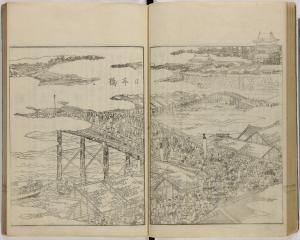

Azuma asobi東遊
Artist: Katsushika Hokusai (1760‑1849)
Edo period, 1799 (Kansei 11, 6th month)
1 volume; fukurotoji binding; woodblock printed; ink on paper; paper covers
26.7 x 15.9 x 1.4 cm
Freer Gallery of Art FSC‑GR‑780.235
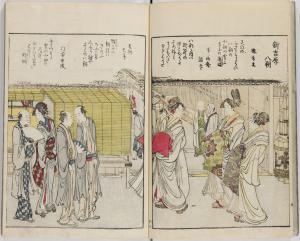
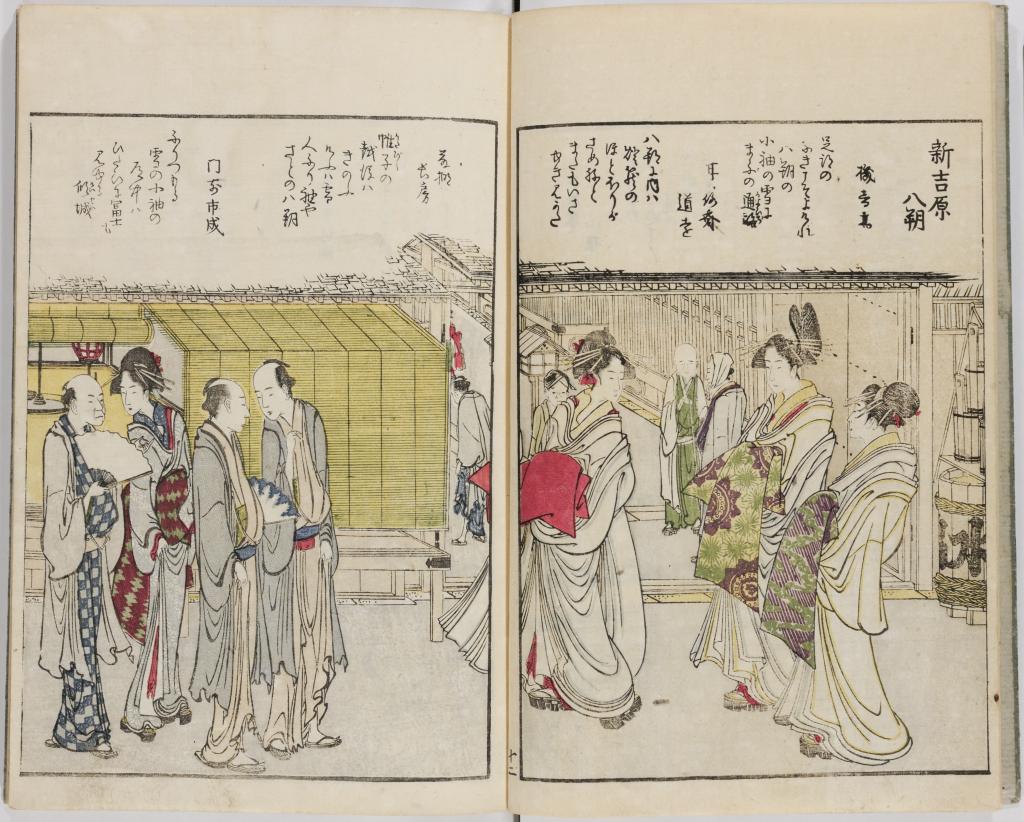
Tōto shōkei ichiran東都勝景一覧
Artist: Katsushika Hokusai (1760‑1849)
Edo period, 1800 (Kansei 12, first month)
1 volume; fukurotoji binding; woodblock printed; ink and color on paper; paper covers
25.8 x 17.5 x 0.5 cm
Freer Gallery of Art FSC‑GR‑780.217.2
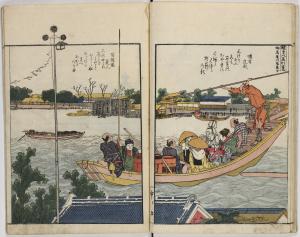
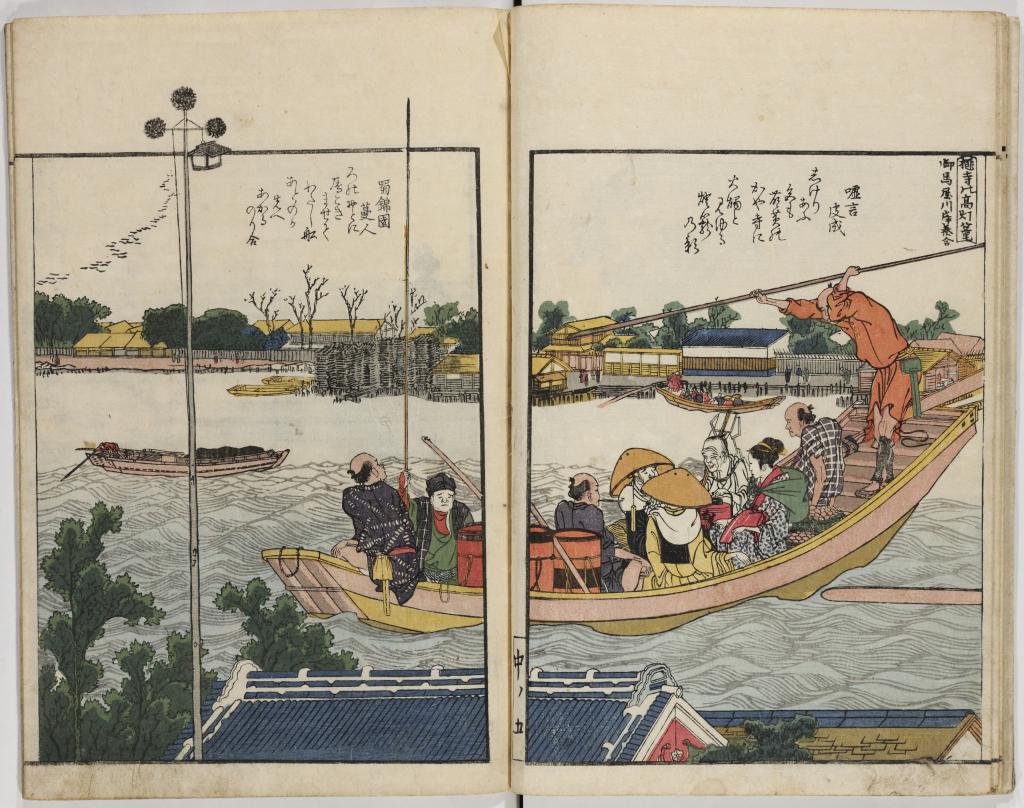
Ehon Sumidagawa ryōgan ichiran 絵本隅田川 両岸一覧
Artist: Katsushika Hokusai (1760‑1849)
Edo period, ca. 1805
Volume 2 of 3; fukurotoji binding; woodblock printed; ink and color on paper; paper covers
26.5 x 18.3 x 0.4 cm
Freer Gallery of Art FSC‑GR‑780.230.2
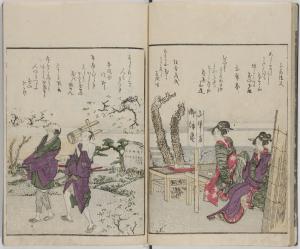
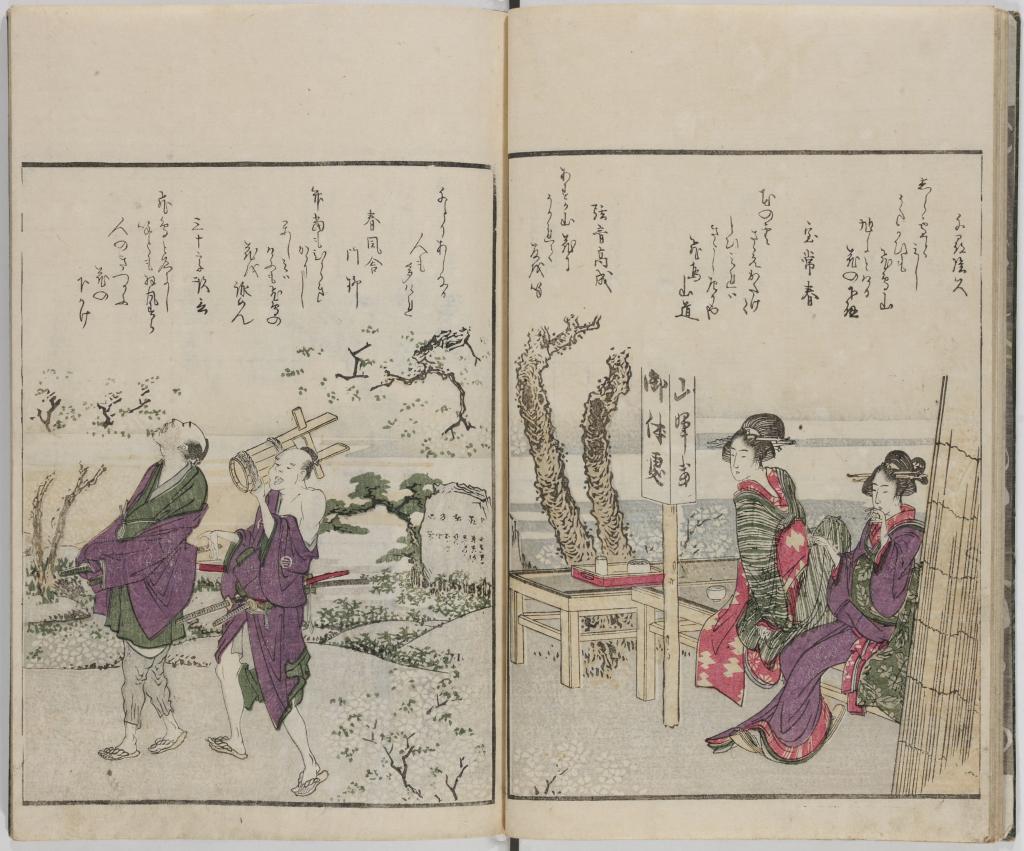
Ehon kyōka yama mata yama画本狂歌 山満多山
Artist: Katsushika Hokusai (1760‑1849)
Edo period, 1804 (Kyōwa 4, spring)
Volume 1 of 3; fukurotoji binding; woodblock printed; ink and color on paper; paper covers
26.7 x 17.5 x 0.6 cm
Freer Gallery of Art FSC‑GR‑780.236.1
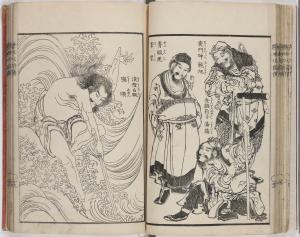
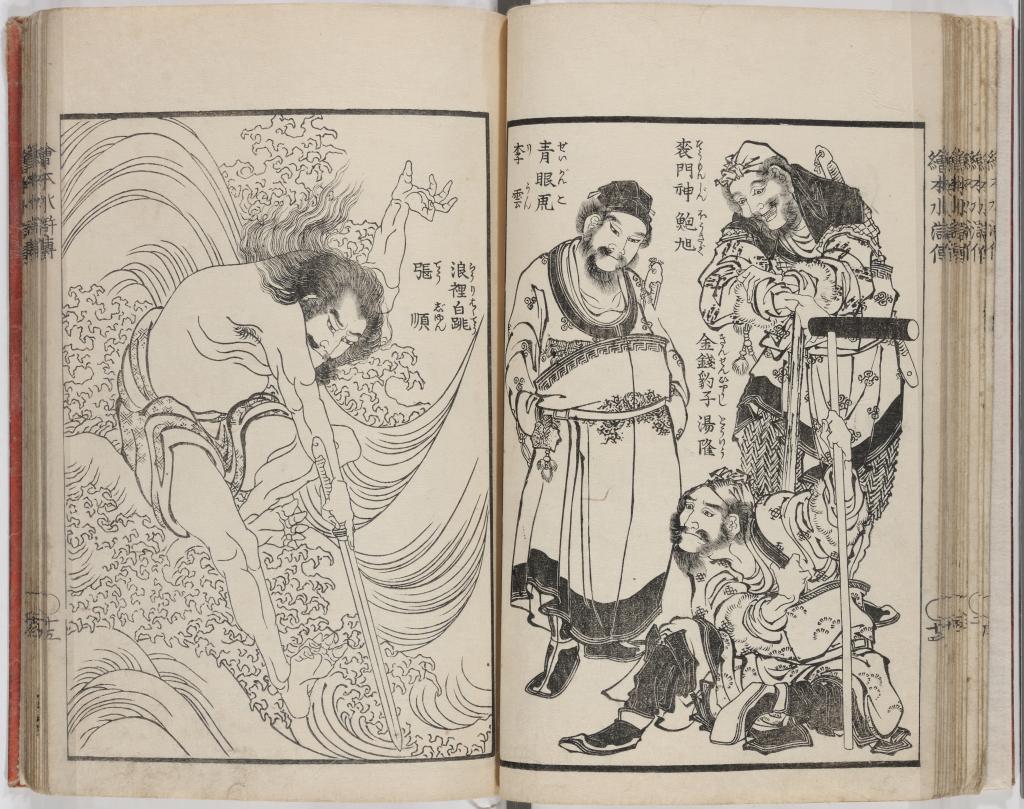
Ehon Suikoden絵本水滸伝
Artist: Katsushika Hokusai (1760‑1849)
Edo period, 1829 (Bunsei 12, 1st month)
1 volume; fukurotoji binding; woodblock printed; ink on paper; paper covers
22.7 x 15.5 x 1.4 cm
Freer Gallery of Art FSC‑GR‑780.241

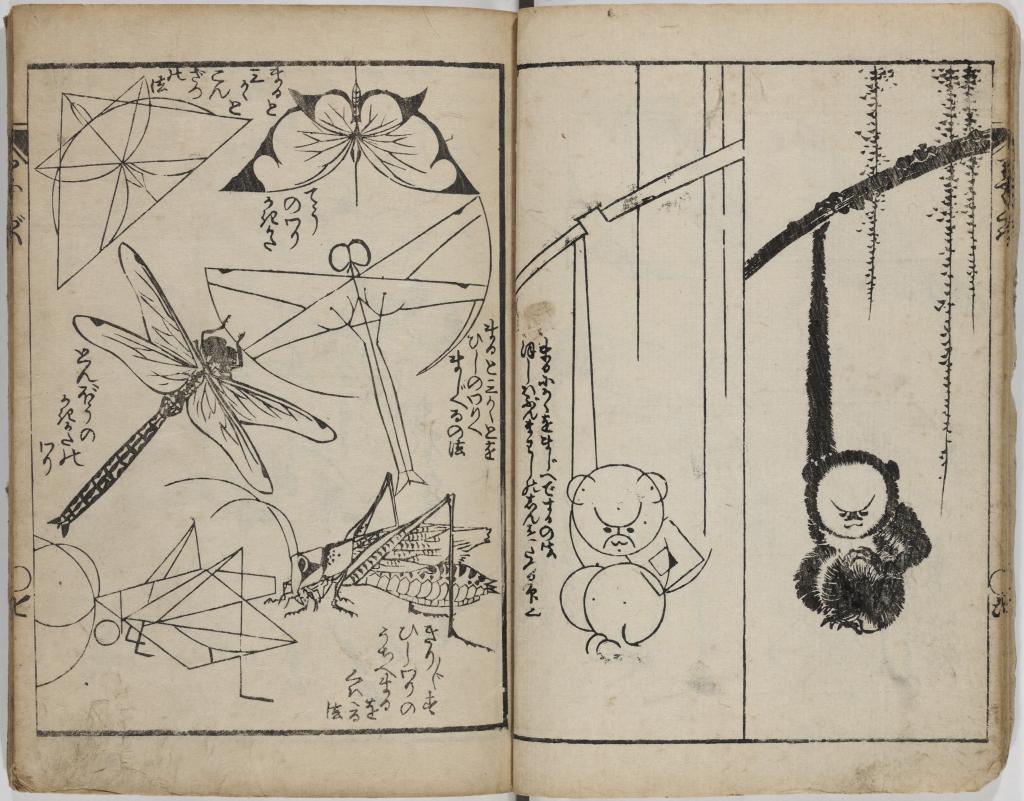
(Ryakuga haya oshie sanpen) Gadōhitori geiko(略画早指南三篇)画道独稽古
Artist: Katsushika Hokusai (1760‑1849)
Edo period, 1812 (Bunka 9)
Volume 1 of 3; woodblock printed; ink on paper; paper covers
18.6 x 13.1 x 0.9 cm
Freer Gallery of Art FSC‑GR‑780.253.1
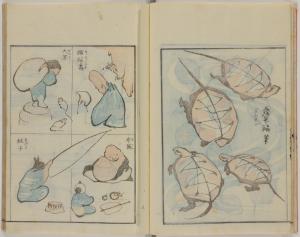
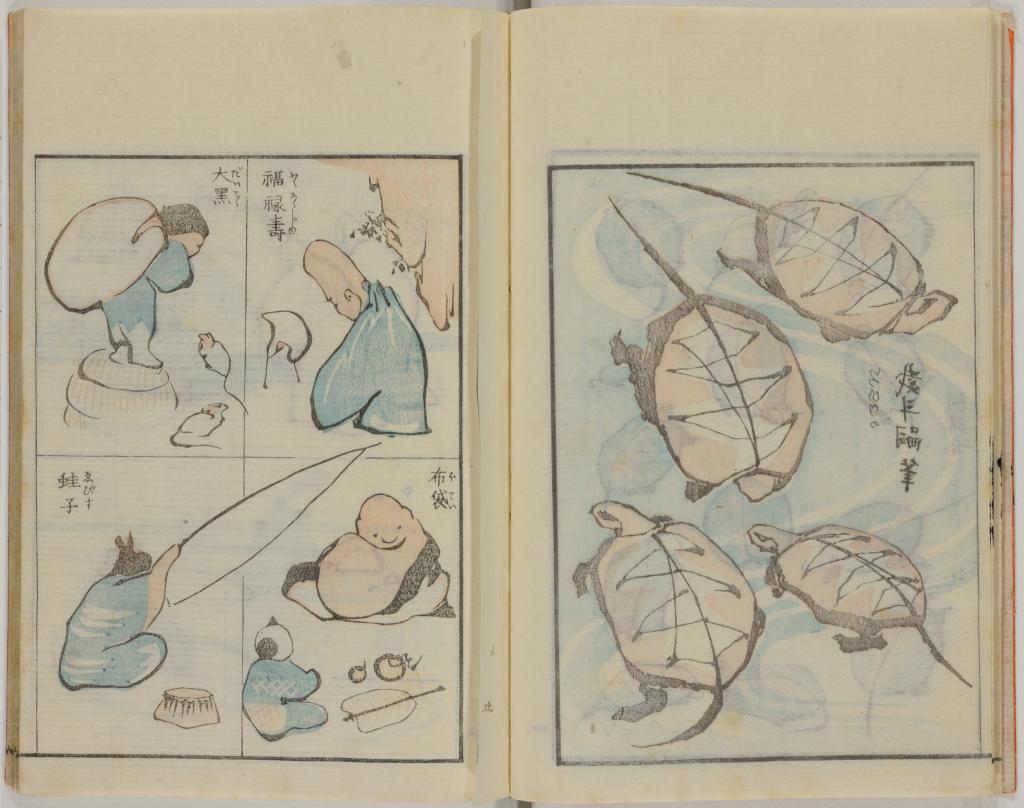
Denshin kaishu Ippitsu gafu 伝神開手一筆画譜
Artist: Katsushika Hokusai (1760‑1849)
Edo period, undated
1 volume; fukurotoji binding; woodblock printed; ink and color on paper; paper covers
22.8 x 15.5 x 0.8 cm
Freer Gallery of Art FSC‑GR‑780.232
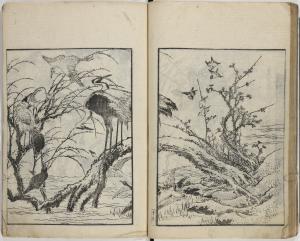

Hokusai gashiki北斎画式
Artist: Katsushika Hokusai (1760‑1849)
Edo period, 1819 (Bunsei 1, 9th month)
1 volume; fukurotoji binding; woodblock printed; ink on paper; paper covers
26.6 x 18.1 x 1.1 cm
Freer Gallery of Art FSC‑GR‑780.223
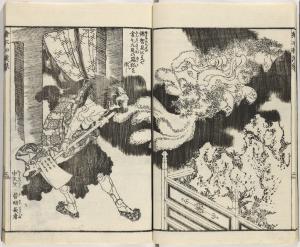

Ehon wakan no homare 画本和漢誉
Artist: Katsushika Hokusai (1760‑1849)
Edo period, 1850 (Kaei 3, spring)
1 volume; fukurotoji binding; woodblock printed; ink on paper; paper covers
22.6 x 15.6 x 1 cm
Freer Gallery of Art FSC‑GR‑780.229
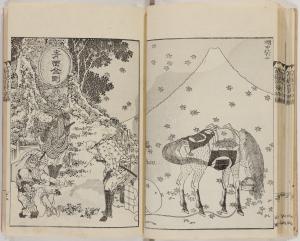
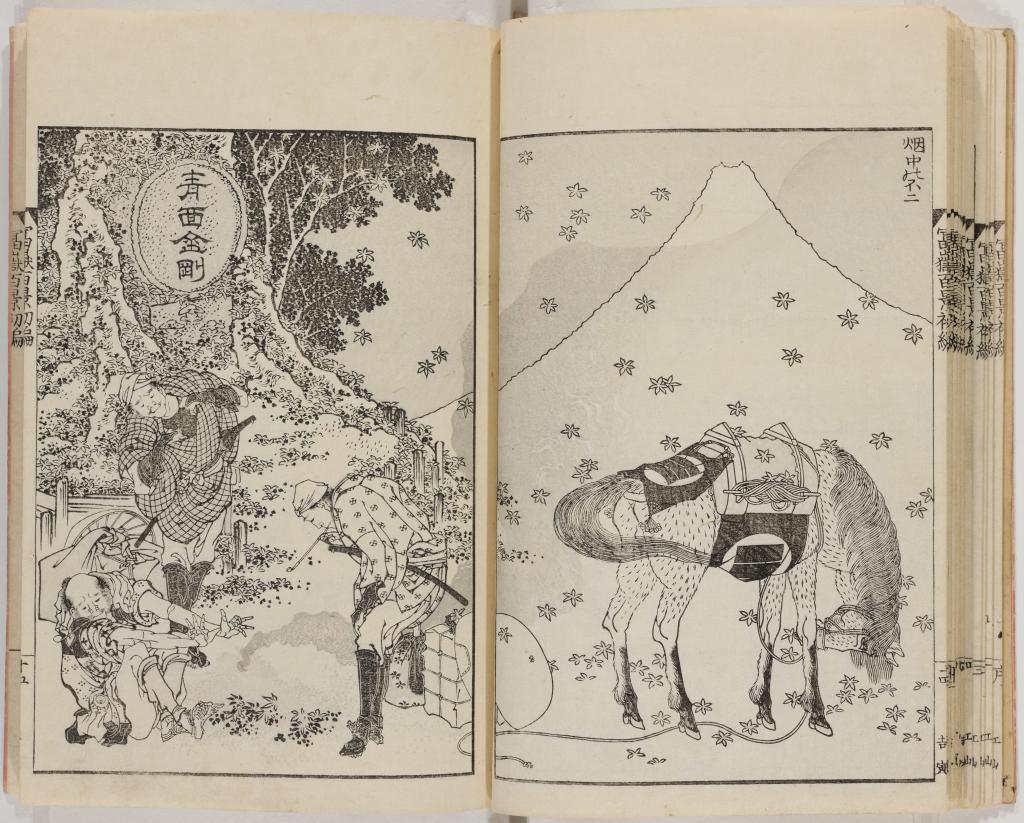
Fugaku hyakkei 富嶽百景
Artist: Katsushika Hokusai (1760‑1849)
Edo period, 1834 (Tenpō 5)
Volume 1 of 3; woodblock printed; ink on paper; paper covers
22.9 x 15.8 x 1 cm
Freer Gallery of Art FSC‑GR‑780.246.1
